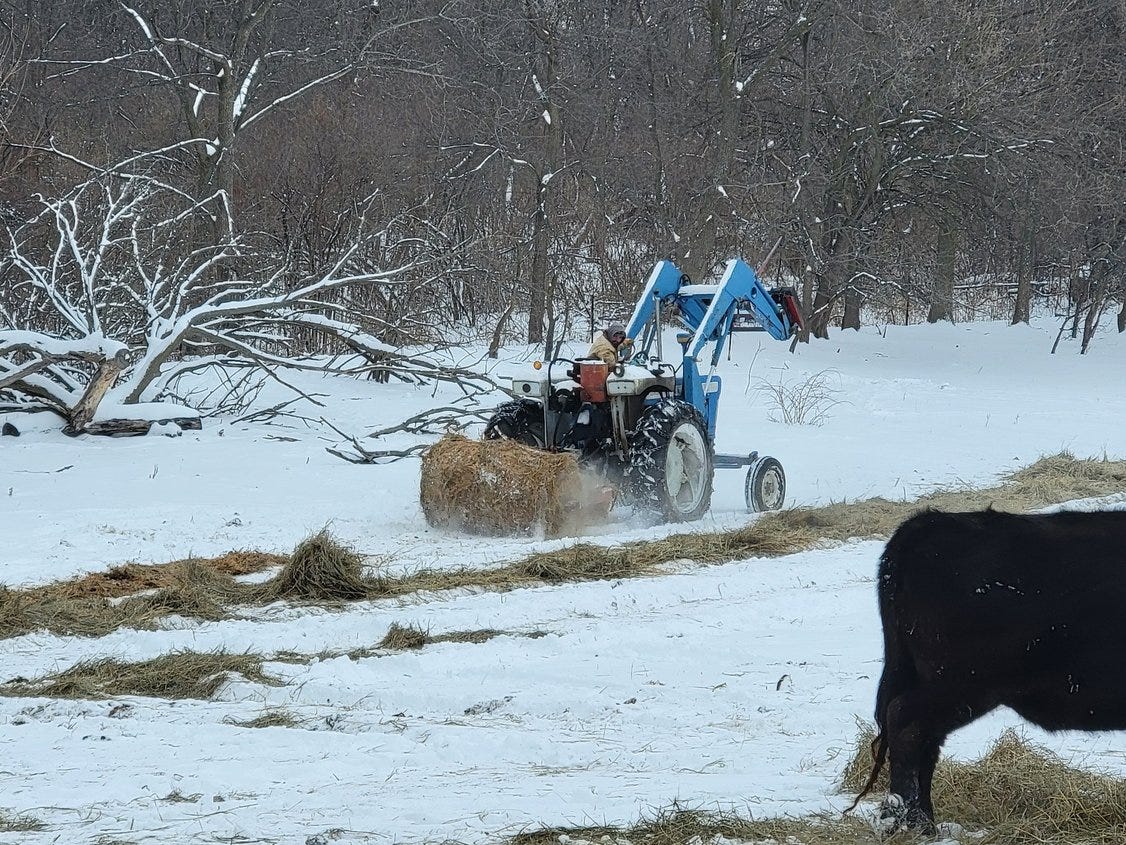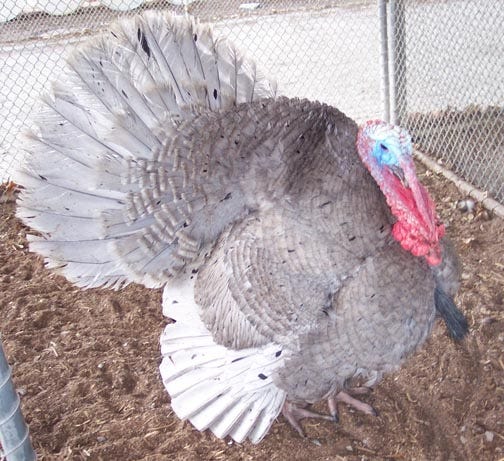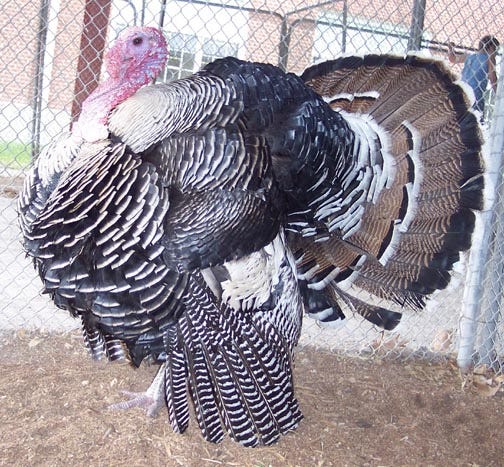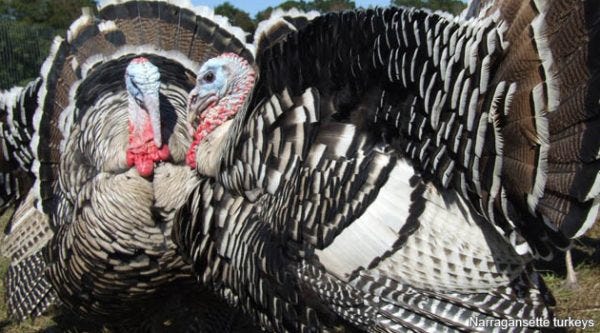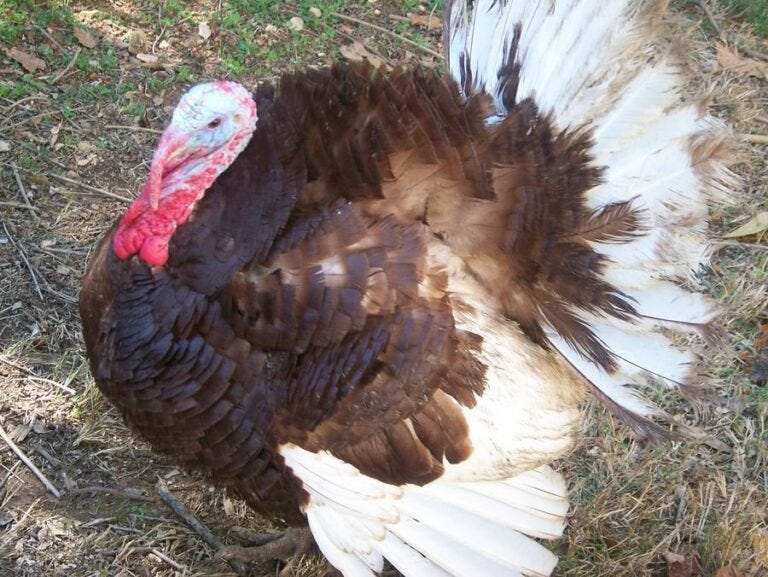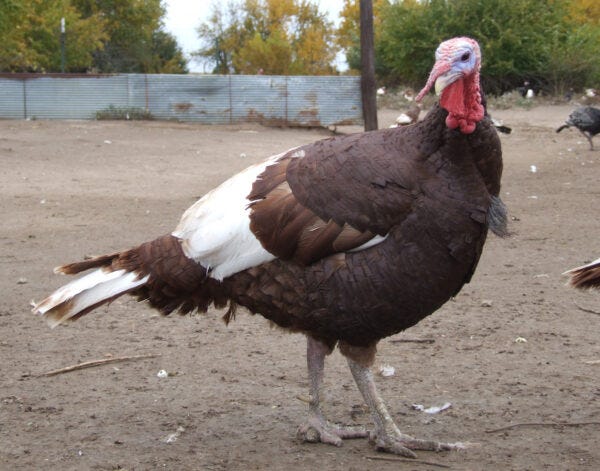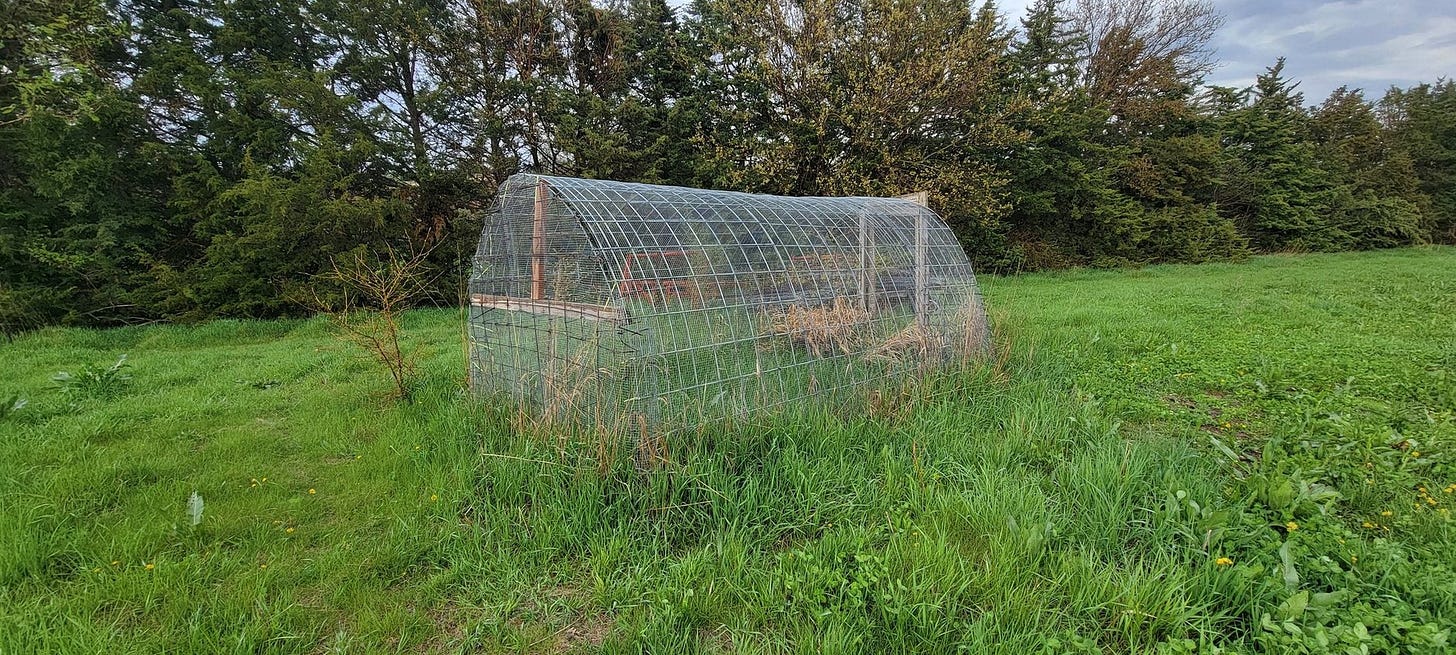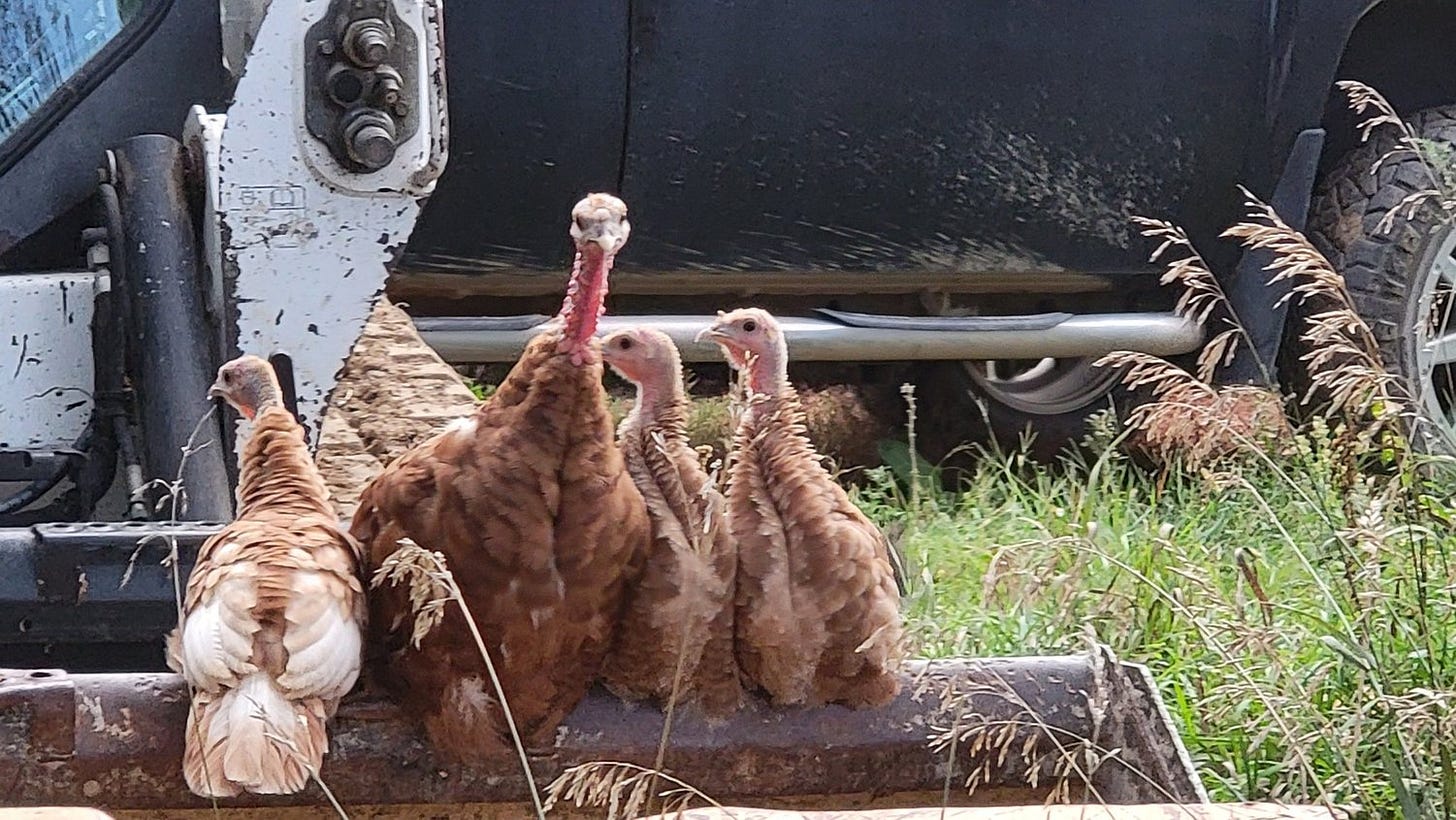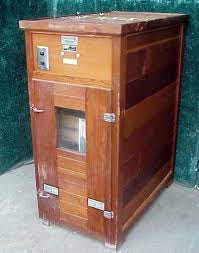Well its been a busy spring here on the farm. Its been nearly a month since I last wrote a substack.
Their is a lot going on here calving, pen building, chicken coop building, seeding, tree cutting, setting up burn piles and fence fixing and hopefully a machinery shed to replace one that is in total disrepair.
We are about done calving. To be honest its not a big deal around here. We have Dexters and Lowline Angus cattle and they are easy calvers. As I said in a previous post we have added Texas Longhorns back into our program. A couple are on feed for the freezer university in September, 3 have been added to our breeding stock. So we are not on calf watch per se. We check them in the evening and if some are close I check them before heading to work in the morning.
We still have cattle on hay as we are again in a drought and the grass while green is not really growing all that great. We desperately need a few inches of rain stretched out over a week or two.
Usually I have cattle in pasture by April 15th or so as the cool season grasses do get ahead usually in the spring with the lush growth. Not last year and not this year. I’m hoping in the next 7-10 days I can get them out in pastures. I let the grass get a good 6-10 inches of growth before I turn cattle out as if it is shorter you be short grass all season and it really hurts the pasture for a couple seasons to get too aggressive.
I have one paddock that I beat up pretty good last fall. It needed fertilizer from the cattle so we rolled hay bales out until mid December when it simply got to muddy to get around in and the cattle were making a mess of it. Now I am getting it ready to seed with red clover. That should have already been done but we had a late season blizzard move through that ended up with being without power for about 36 hours so no water no heat, nothin
Blizzard 2025
.As you can see some trees have been topped and others the lower limbs were broken. We had 6+ inches of heavy wet snow, with 30-40 mph winds so once the snow piled on the trees simply could not withstand both. The fortunate thing was deciduous trees did not have leaves so the damage if any was wind only. If they’d had been leaved out it would have been a disaster. We still have several weekends of tree cutting, trimming and piling. With the drought their is a burn ban that is off and on depending upon the moisture. Some of these piles are massive 30x30x10-15 feet high so ember could go a ways. Waiting until planting season is over is probably a good idea so the fields do not have so much of last years growth laying around to start burning.
Many branches and trees fell down on fence lines and that one in particular took a substantial hit, cleaning them up has occupied much of my time. 1 stretch is 600 feet long of solid damage to trees and fence. These are trees I planted 40+ years ago. Its sad to see them get trimmed up the way I am but their is no other choice. This stretched needed a trimming so I guess the good thing is nature made me do it instead of putting off another year. Now the fence line is cleared Like I have wanted for a few years now.
We are redesigning our cattle pens, feed pens and chute system and loading system. While we use a Bud Box we are making several changes. We are in the process of building a shed for our headgate/chute system. This will save our squeeze chute from the weather and we can put a table in for tools like taggers and other tools and install a scale to weight cattle. It will also have a couple of bays for mom to be and her calf if the weather is in-climate, I have never had a calving shed so this will be nice for us and them. I will have more on the construction of this shed as I have time to post. The scale will take the guess work out of feed conversion ratios and let us accurately weigh calves and stock we sell. We use a Bud Box system which 1 person can sort and run them into the auto squeeze chute if need be.
We are also changing out load in / out pens and chutes. What we have now works but when cattle get obstinate about loading it can get rather dangerous for us and them.
Bud Box: The Bud Box was designed by stockmanship instructor Bud Williams and is essentially a rectangular pen in which the alleyway leading to the chute is placed at a right angle at the point of entry into the box. This low stress system makes cattle handling easy as it works with their natural instincts to go back where they came from. This type of facility is simple in design and highly effective.
The chicken coop is for this years crop of chicks and turkeys. While I have two coops they they are in need of freshening up. I am setting up a breeding program for chickens and turkeys. So I am not totally dependent on hatcheries and the world situation.
I cover breeds here:
Raising Chickens for eggs and meat.
I have raised chickens off and on since 1978. While not a real time consuming endeavor it does take time and most of all money. Nothing in the home chicken business is cheap any longer. Their is not a lot of money to be made either. In fact more than likely red ink will flow like a river.
I cover what I purchased and have coming late May here:
Prepping for your baby chicks
So now that you found chicks to order and have a delivery date its time to get set up. Even those of us that have raised them in the past still have things to get ready.
My plan is to have breeding stock of the following:
Dominics - medium producer - heritage breed - straight run. Hearty and the moms are broody. So if I decide to raise my own chicks I can keep the breed true. 180-260 medium brown eggs per year
Delaware - Medium producer - heritage breed - straight run - produces large to jumbo brown eggs 200-280 per year. Again if I decide to raise my own I keep keep true to the breed.
Black Laced Gold Wyandotte - medium producer - Heritage - Straight Run - lays 180-260 medium brow eggs. Again if I decide to breed for next spring I can hold true to this breed
Speckled Sussex - medium producer - Heritage = Straight Run - lays 180-240 Large brown eggs. Again if I decide to breed for next spring I can hold true to this breed.
All are heritage breeds and will breed true.
Turkeys:
Blue Slate
Poultry Show Class: Turkeys
Weights: Hen—————-14 lbs
Tom———-23 lbsPurpose and Type: Egg Laying and Meat; Exhibition
Egg Color: Off White with brown specks
Egg Production: Poor
Egg Size: Large to Extra Large
Temperament: Active
Fertility Percentage: 60-75%
Broody: Setters
Mating Ratio: 7 Females to 1 Male
Roost Height: 2+ feet
Country of Origin: North America
TLC: Watch Status
APA: Yes, Recognized by the Standard of Perfection in 1874
https://livestockconservancy.org/slate-turkey/
While most early texts state that Slate turkeys originated from a cross of the Black turkey on a white turkey, there is little genetic evidence to support such a conclusion. The slate gene is a legitimate mutation that arose, similar to how the gene for blue in the Andalusian chicken is the result of an unrecorded mutation. One added element of confusion in defining the variety is that there are actually two different genetic mutations – one dominant and one recessive – that produce the blue slate color, and these produce slightly different shades. White and rusty brown markings may be present but are considered a defect.
Blue Slate Turkey
The Slate, or Blue Slate, variety is named for its color, which is solid to ashy blue over the entire body. They may also have a few black flecks. It’s also called the Blue or Lavender turkey, with hens being lighter in hue than toms. The head, throat, and wattles are red to bluish-white. Their beak is horn in color, their eyes are brown, and their beard is black. The shanks and toes are pink.
The Standard weight for a young tom is 23 pounds and 14 pounds for a young hen. Since, however, the Slate hasn’t been selected for production attributes, including weight gain, for years, many birds may be smaller than the standard. Careful selection for good health, ability to mate naturally, and production attributes will return this variety to its former stature.
The Slate was accepted by the American Poultry Association in 1874. It’s been popular in exhibition circles and is gaining popularity in pastured poultry production. Renewed interest in the biological fitness, survivability, and superior flavor of the Slate has captured consumer interest and created a growing market niche. The Slate is less well documented and more variable in type and color than any other variety. This makes it more challenging to breed consistently than the others. Its production potential today isn’t known.
Narragansett
Poultry Show Class: Turkeys
Weights: Hen—–14 lbs
Tom—-23 lbsPurpose and Type: Egg Laying and Meat; Exhibition
Egg Color: Off White with brown specks
Egg Production: Poor
Egg Size: Large to Extra Large
Temperament: Active
Fertility Percentage: 60-75%
Broody: Setters
Mating Ratio: 7 Females to 1 Male
Roost Height: 2+ feet
Country of Origin: North America
APA: Yes, Recognized by the Standard of Perfection in 1874
TLC: Watch Status, considered a Sustainable Heritage Turkey Breed.
The Narragansett turkey is named for the sandy Narragansett Bay in Rhode Island, where the variety was developed. It descends from the domestic turkeys – possibly Norfolk Blacks – brought to America by English and European colonists beginning in the 1600’s. Improved and standardized for production qualities, the Narragansett became the foundation of the turkey industry in New England. Though it was valued across the country, it was especially important in Rhode Island and Connecticut. The American Poultry Association recognized the Narragansett in 1874.
https://livestockconservancy.org/narragansett-turkey/
According to an 1872 account, it wasn’t uncommon to find flocks of one to two hundred birds – the product of a breeder flock of a dozen hens. Little supplemental feed was given to the turkeys. Instead, they ranged for grasshoppers, crickets, and other insects. Farmers raising the turkeys were aware of the benefits of genetic selection and raised young toms that weighed between 22 to 28 pounds and hens that were 12 to 16 pounds.
While the Narragansett was never as popular as the Bronze variety, it was widely known in the Midwest and mid-Atlantic states as well as New England. Interest in the Narragansett began to decline in the early 1900s as the popularity of Standard Bronze turkeys grew. The Narragansett wasn’t used for commercial production for decades until the early 21st century when renewed interest in biological fitness, survivability, and superior flavor captured consumer interest and created a growing market niche.
The Narragansett color pattern contains black, gray, tan, and white. Its pattern is similar to that of the Bronze, with steel gray or dull black replacing the coppery bronze. White wing bars are the result of a genetic mutation that removes the bronze coloration and isn’t known outside the United States. The Narragansett’s beak is horn colored, its head is red to bluish-white, and its beard is black. The shanks and feet are salmon-colored. The standard weight for young hens is 14 pounds and toms are 23 pounds. However, since the Narragansett hasn’t been selected for production attributes, including weight gain, for years, many birds may be smaller than the standard. Careful selection for good health, ability to mate naturally, and production attributes will return this variety to its former stature.
Narragansett turkeys have traditionally been known for their calm disposition, good maternal abilities, early maturation, egg production, and excellent meat quality. As recently as 50 years ago, they were well regarded for production qualities. This historic variety, unique to North America, merits evaluation for production in sustainable agriculture systems. The Narragansett turkey would make a useful and beautiful addition to the family farm.
Bourbon Red Turkey
Poultry Show Class: Turkeys
Weights: Hen—–14 lbs
Tom—-23 lbsPurpose and Type: Egg Laying and Meat; Exhibition
Egg Color: Off White with brown specks
Egg Production: Poor
Egg Size: Large to Extra Large
Temperament: Active
Fertility Percentage: 60-75%
Broody: Setters
Mating Ratio: 7 Females to 1 Male
Roost Height: 2+ feet
Country of Origin: North America
TLC: Watch Status
APA: Yes, Recognized by the Standard of Perfection in 1909
The Bourbon Red turkey is named for Bourbon County in Kentucky’s Bluegrass region where it originated in the late 1800s. It was developed by J. F. Barbee from crosses between Buff, Bronze, and White Holland turkeys though the initial steps actually took place in Pennsylvania, where Buff turkeys of darker red hues – called Tuscarora or Tuscawara – were bred and then taken west with settlers bound for Ohio and Kentucky. These dark Buff turkeys would be the primary foundation for the new variety.
https://livestockconservancy.org/bourbon-red-turkey/
After some years of selection, Barbee was able to produce consistently good-sized, dark red turkeys with white wings and main tail feathers. He christened these “Bourbon Butternuts.” For some reason, perhaps because the name did not appeal to the public, the birds did not attract attention. Barbee rechristened them “Bourbon Reds,” Bourbon for his home county, and red for the rich, chestnut color of the plumage. The name change seemed to work, and better sales were reported.
The Bourbon Red variety was recognized by the American Poultry Association in 1909. It was ambitiously selected and promoted for utility traits, including a production-type conformation with a heavy breast and richly flavored meat. Early breeders of the Bourbon Red also claimed that their birds would grow as large as any Mammoth Bronze, a precursor to the Broad Breasted Bronze. The Bourbon Red was an important commercial variety through the 1930s and ’40s. But as time went on, it declined in popularity as it was unable to compete with the broad-breasted varieties. Since 2002, renewed interest in the biological fitness, survivability, and superior flavor of the Bourbon Red has captured consumer interest and created a growing market niche.
Bourbon Red turkeys are handsome. They have brownish to dark red plumage with white flight and tail feathers. Tail feathers have soft red bars crossing them near the end. Body feathers on the toms may be edged in black. Neck and breast feathers are chestnut mahogany, and the undercolor feathers are light buff to almost white. The Bourbon Red’s beak is light horn at the tip and dark at the base. The throat wattle is red, changeable to bluish white, the beard is black, and shanks and toes are pink. Standard weights for Bourbon Reds are 23 pounds for young toms and 14 pounds for young hens. Since, however, the Bourbon Red has not been selected for production attributes, including weight gain, for years, many birds may be smaller than the standard. Careful selection for good health, ability to mate naturally, and production attributes will return this variety to its former stature.
The Bourbon Red is an attractive bird for either exhibition or just for the backyard. They are active foragers, and would probably do well in a pasture production system, either as purebreds or when crossed with white turkeys. They also present an attractive carcass when dressed, since the light pinfeathers leave no residue of dark pigment showing the feather follicles as with the Bronze. Unfortunately we have no recent information on growth rate, feed conversion or egg production for any of the rare varieties. Documentation of performance information is urgently needed so that this variety can be promoted for use in sustainable agriculture as well as for backyard breeders.
These are the breeds I have coming in late June. Again the plan is to breed them so I have a supply that is not dependent on the hatcheries, postal service and the government regulating sales. It seems they just are not going to let go of the bird flu thing so in an effort to have a steady egg and meat supply I am going this way.
I have several small cattle panel coops that can be moved easily and I can run hot netting around to keep them in a pen. ( one side of their wings getting clipped disables flight. )
Ultimately they will occupy the new coop and the chickens will go back to the smaller coops.
I put a tarp over 1/2 of these when I am using them. I am considering put some old roofing tin I have laying around as it would be more permanent, tarps last about 1 year. I am fortunate as I drive by a Home Depot once in a while and stop in and look at their 70% off pile of lumber. It can be crooked, have a hook on the end, a end broken off or a large knots or other defect. For things like this who cares? As long as it takes nails it works. The cattle panels are from a neighbor I helped move as he had been bought out by the airport and for helping him I could take all the panels I wanted. So I’ve really only have a few dollars and time in them. they can be dragged around or I can put some wheels on them which would make that process easier. I used 1/4” hardware cloth over the top of the cattle panels to keep predators out. I used chicken wire and raccoons tore that and grabbed some chickens. So between the hardware cloth and raccoon traps that nonsense has ended.
I will also have to build waterers and feeders for all these birds, so its going to be a busy summer. I have to come up with something for the turkeys as the chicken nipples do not let turkeys get enough water and the store bucket waterers with heater suck at best. They are expensive and are useless in our winters.
This is one of my Bourbon Red moms with her brood.
Pretty rough group that you would not want to meet on the street…. Midget Whites and Bourbon reds.
Farmer Solutions for frozen waterers
As I set here this evening its 10 degrees and -25 wind chill and dropping, we’ve had 10 inches of snow over the last 24 hours and sustained 20-25 mph winds. Having raised cattle and other livestock since 1980 I have tried many solutions to keep waterers open in sub freezing temps. Some worked better than others but none were great. All cost a lot of mon…
At this point what I see coming financially, politically and with the food supply in a flux I feel it is smart to harden the most important thing we use - FOOD. Money can be made in many ways, it may not be much but hopefully it will be enough to tide one over. Food is crucial - its necessary, money does not digest well. Between the two I will always choose food. With grocery store all on a just in time stocking program they are literally 3 days on any given say of being out of food. Any disaster or what could be perceived as a disaster and that three days will shorten to hours. Having a sustainable food supply is far more important than retirement money or anything else I can think of. Money can buy food - IF food is available. If it is not no amount of money will buy food. Having either a stock or in my case a live supply that an be tapped in an emergency is just smart planning at this point.
A few years ago you could buy rabbits at feed stores like TSC. No longer can that be done. The government stopped those places from selling them due to people buying them for easter and then tiring of them and turning domesticated know nothing about survival rabbits out into the world. Of course this was a disaster for the rabbit and the government stopped it.
The same thing could very well happen with chickens at such stores or even having them shipped via US Mail. This year stories abound with chicks arriving dead because they are taking to long for USPS to deliver. You can bet every last penny you have the animal rights groups are just chomping at the bit - gathering data - and will push to shut this down also. I foresee this happening with chickens, maybe not a ban but a permission slip and required inspections prior taking ownership of chicks. ( government calls permission slips licensing / license to take the mental sting out of permission slip. I am not participating in that fallacy licenses are permission slips its just that simple. Only two classes of people require permission slips, children or slaves - pick one because that is what we are. ) What then for remote areas or areas where its 200-300+ miles to a hatchery? Small flock people like me or city dwellers with a few hens will either have to drive or give up raising chickens. So in an effort to foil our owners in their efforts to stop local food with fake pandemics, real pandemics started by their labs and radical vegetarians it just seems like a smart move to have some breeding stock around.
I am fortunate as a few years ago I purchased an Leahy Favorite incubator. It will hatch up to 400 chicken eggs. It is a manual turn unit but the temp is a set and forget. These are made of redwood so they hold the temp and humidity levels steady leading to excellent hatch rates. Yes its old - really old but it works and does so in a great manner.
I have hatched chickens and turkeys in this previously and currently have some chicken eggs in it. Day 12 into 20 days. So 6 more days and no more turning and two more and chicks will be hatching.
With the current world events I feel it is a good time to look at as much self sufficiency as we are capable of. Being off the food grid of big food is one of the best ways. We know they are loading our food with chemicals, fillers and who knows what else. Those that do not live on a farm or acreage its harder, but still possible to do some preparation. Buy locally, their are resources that farmers are listed that you can buy from.
https://localhens.com/ Fruits, vegetables, chicken, pork, eggs, beef, milk nearly everything a grocery store has except the high process food. All from a local farmer.
https://www.realmilk.com/ Purely a raw milk resource. If you’ve never had raw milk it is well worth trying. I like the whole raw milk, it does not have the cooked flavor, it has the full cream no homogenization so when you open the bottle it will have the cream top on it.
Local chapters help you find locally-grown organic and biodynamic vegetables, fruits and grains; and milk products, butter, eggs, chicken and meat from pasture-fed animals. They also represent the Weston A Price Foundation at local fairs and conferences and may host cooking classes, potluck dinners and other activities to help you learn to integrate properly prepared whole foods into your lifestyle. Local chapters may be able to put you in touch with health practitioners who share our philosophy and goals.
https://www.westonaprice.org/ A good resource of all fresh food.
https://www.farmtoconsumer.org/ The FTCLDF protects the rights of farmers and consumers to engage in direct commerce; it protects the rights of farmers to sell the products of the farm and the rights of consumers to access the foods of their choice from the source of their choice. FTCLDF is a true grassroots organization and receives no government funding and little or no corporate funding.
Farm or consumer this site keeps you up to date on the food freedom movement. This is unique as other organizations promote and research food. As far as I know FTCLDF is the only one keeping score on food legislation and helping local farmers defend themselves against our owners - government.
We have seen in the last 5 years just how fragile our food and daily household use items are. Eggs are just the latest food or daily use item to get in short supply.
We are headed to uncertain times politically and knowing how to grow food, who is selling direct is just a cheap insurance policy against disaster. Its knowledge you may never use but if you need it by the time you figure it out the situation can turn serious. We are going to need each other in the future as government is NOT going to help (like they ever have) they will be financially broke and unable to. History is litter with the bodies of those that have depended upon government. Look at NC and the damage from the hurricane. Was it people helping people of government helping people? It was the former, government actively stopped people from helping. It is pst time to realize government is your mortal enemy. Government cares about power and ruling over you - nothing else matters.
Dire Straits
Well the 2022 USDA Ag Census has been released and it is ugly for the future of the USA and its farmers and ranchers.
Agriculture is going to go through a great upheaval over the next 5-10 years. Financially with interest rates rising we will sine the 1980’s farm crisis repeated. High prices for inputs, low prices for grain and rising interest rates will test farmers ability to survive. Then we have the fact the average age is 58 with few young people able to get started because of high land, rent and equipment costs.




